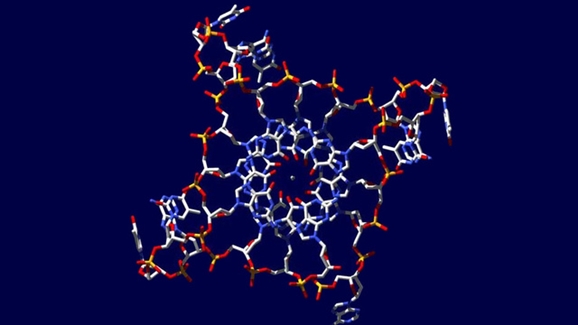Human Cells Contain Quadruple Helix DNA, A Possible Key To Stopping Cancer Growth
This article is more than 2 years old
This is the sixtieth year of the discovery of the double-helix structure of DNA, which expanded our understanding of how humans work on a molecular level, as well as giving actors in cop shows plenty of dialogue to bandy about. And after 10 years of investigation, ranging from computational theorizing to actual lab work, that initial discovery has been updated, ushering in a new era when two helices just aren’t enough for our fast-paced modernity.
With funding from Cancer Research UK, researchers from Cambridge University, the same location as the first discovery, have published a paper for Nature Chemistry proving four-stranded quadruple-helix DNA structures exist, and are formed inside the human genome. And they’re called G-quadruplexes, which automatically ups their street cred. They form in places where the DNA is rich in the building block guanine, and are more likely to occur in genes where cell division runs rampant, as is a habit of cancer cells. It is believed that the ability to contain these quadruplexes with synthetic molecules may be the key to halting the spread of cancerous tumors. That’s right, eat a four-helixed dick, cancer!

The study was led by Giulia Biffi, working through Professor Shankar Balasubramanian’s labs at Cambridge’s Department of Chemistry and Cambridge Research Institute. Balasubramanian explains:
We have found that by trapping the quadruplex DNA with synthetic molecules we can sequester and stabilize them…The possibility that particular cancer cells harboring genes with these motifs can now be targeted, and appear to be more vulnerable to interference than normal cells, is a thrilling prospect.
Baffi’s study involved the creation of antibody proteins able to seek out the hubs of quadruplex activity, which proved their existence in the first place. By then making the antibodies fluorescent, Biffi and his team could measure where and at what point the quadruplexes appeared in the genomes. While this appears to be common enough throughout normal human cells, a noticeable increase occurred with the antibodies’ fluorescence becoming more intense during the “s-phase,” which happens when the DNA replicates before the cell can divide, a frequent occurrence in cancer oncogenes which causes tumors to grow and spread.
“This research further highlights the potential for exploiting these unusual DNA structures to beat cancer — the next part of this pipeline is to figure out how to target them in tumor cells,” said Dr. Julie Sharp, of Cancer Research UK. So they have the target. They have a weapon that seems capable. The challenge is the transport. Sounds like it’s time for a voyage. A Fantastic Voyage.
What a terrible trailer. And seriously, fuck cancer.












